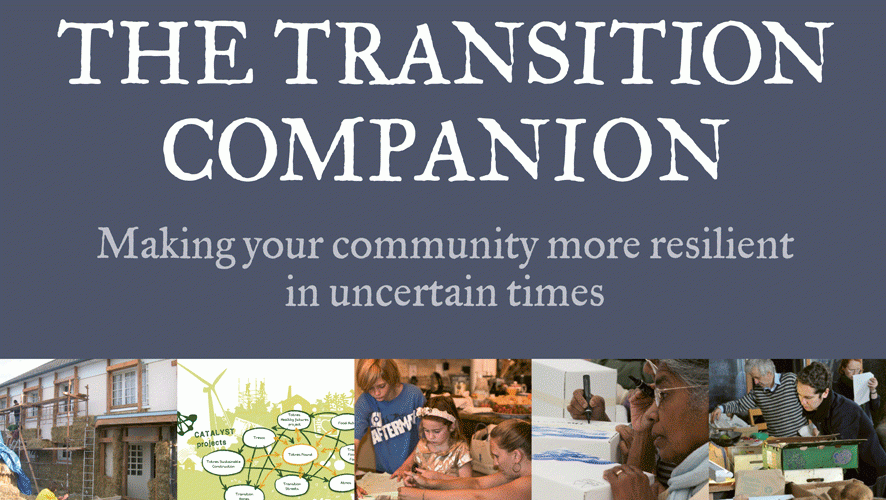Being an environmentalist isn’t for sissies – the statistics are depressing and they turn people off, and the problems often seem to have no end. Anyone feeling this way should read The Transition Companion, which mixes knowledge, action and inspiration to address a range of areas that are central to our daily lives, including health, education, food and housing. It is a great how-to guidebook for community-based strategies that can reduce oil dependency and help address climate change.
Being an environmentalist isn’t for sissies – the statistics are depressing and they turn people off, and the problems often seem to have no end. Anyone feeling this way should read The Transition Companion, which mixes knowledge, action and inspiration to address a range of areas that are central to our daily lives, including health, education, food and housing. It is a great how-to guidebook for community-based strategies that can reduce oil dependency and help address climate change.
The Transition Companion is the sequel to The Transition Handbook, written in 2008 by Transition movement founder Rob Hopkins. This second volume is the repository for everything that members of the movement have learned during the past decade. The first Transition initiative was organized in Totnes, England, in 2006. A group of activists created an “energy descent action plan” which consisted of local solutions for relieving the community’s oil dependency, such as cultivating food and building materials closer to home using nut tree farms, community gardens, cob houses and other sources. This approach has since struck a chord worldwide, and hundreds of initiatives have sprung up, from street-based groups to city and regional networks.
Companion is written and set up like an elementary school textbook. There are short, colourful sections with bullet points, photographs and case studies, making the content easy to engage with and accessible to just about anyone. The beginning sections present background, principles and ideas, and the bulk of the book is focused on ingredients (the different components of getting an initiative off the ground) and tools (practical tips and ideas for doing so). The information is organized to trace the trajectory of a successful initiative: starting out, deepening, connecting, building and daring to dream. Starting out, for example, covers visioning exercises and how to raise awareness, offering tools for running effective meetings and communicating with the media. Connecting, on the other hand, discusses how to create working groups on health or education and resolve conflicts while planning.
Hopkins emphasizes that these ingredients and tools are simply some of the adaptable ideas that have worked in other communities. The movement has retained its grassroots appeal while expanding globally by staying true to the principle that each group must choose the appropriate actions for their situation. There is no formal hierarchy or bureaucracy, and the only requirement is that an initiative has to care about creating a better world, starting at the community level.
This is not a book you sit down and read end-to-end. You pick up The Transition Companion when you want to see if other communities have faced the same problems as yours while trying to live better, or if you need guidance, next steps and the inspiration to take action.
The Transition Companion, Rob Hopkins, White River Junction, Vermont: Chelsea Green Publishing, 2011, 320 pages
Subscribe now to get more book reviews in your mailbox!
Reviewer Information
Sylvie Spraakman is an environmental engineer based in Kitchener, Ontario. She blogs about water and energy resources, mining, climate change and other current issues at sylvieruminates.blogspot.ca.













